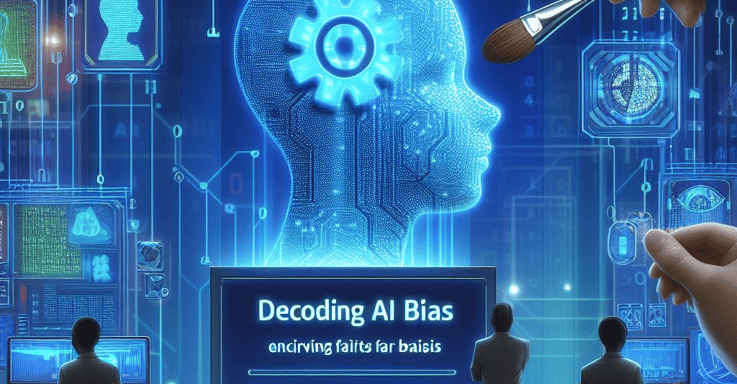Decoding AI Bias:
Ensuring Fairness in Algorithms


Introduction
Artificial intelligence (AI) has transformed modern life, enabling remarkable achievements across various domains. From self-driving cars to personalized recommendations, AI systems have become integral to our daily routines. However, alongside these advancements, concerns about fairness and bias have emerged. Ensuring that AI systems treat people fairly is a critical challenge — one that requires a holistic approach. In this blog post, we’ll explore the sources of bias, discuss strategies for promoting fairness, and address the challenges of implementing these strategies.
Sources of Bias in AI
Data Collection and Preparation:
Objective: Ensure that training data is representative, balanced, and free from biases.
Collect diverse data that accurately reflects the real-world context.
Address biases present in historical data.
Algorithmic Design and Development:
Objective: Develop algorithms and models that are fair, unbiased, and equitable.
Choose fairness metrics (e.g., demographic parity, equalized odds) during model development.
Be aware of societal biases in assumptions and decisions made throughout the AI lifecycle.
Fairness-aware Learning and Training:
Train models with fairness in mind.
Regularize the learning process to reduce bias.
Consider fairness constraints during optimization.
Evaluation and Validation:
Continuously assess model performance using fairness metrics.
Understand how different groups are affected by the AI system.
Iterate and improve based on feedback.
Transparency and Explainability:
Make AI systems interpretable.
Use explainable AI techniques to provide insights into decision-making.
Document fairness considerations.
Monitoring and Accountability:
Deployed models need ongoing monitoring.
Detect and address emerging biases.
Be accountable for the impact of AI predictions.
Policy, Regulation, and Governance:
Collaborate with policymakers, ethicists, and stakeholders.
Advocate for responsible AI practices.
Shape regulations that promote fairness.
Applying Strategies to Your Own Project
Data Collection and Preprocessing:
Collect diverse and representative data.
Address biases in training data.
Use techniques like oversampling or reweighting to balance underrepresented groups.
Algorithmic Adjustments:
Modify algorithms to incorporate fairness constraints.
Penalize models that make biased predictions.
Explore fairness-aware machine learning libraries and tools.
Model Evaluation:
Evaluate model performance using fairness metrics.
Understand how different groups are affected.
Consider trade-offs between accuracy and fairness.
Explainability:
Provide reasons for AI decisions.
Transparency builds trust with users.
Collaborate and Learn:
Engage with the AI community.
Stay informed about best practices and emerging techniques.
Challenges in Implementing Fairness Strategies
Trade-offs: Balancing fairness and model performance can be challenging. Improving fairness may lead to decreased accuracy, and vice versa.
Complex Sources of Bias: Bias can arise from societal, technical, or combined factors. Distinguishing between them is difficult.
Changing Contexts: Fairness requirements evolve over time. Models need continuous adaptation to remain fair.
Ethical Considerations: Fairness decisions involve ethical choices. Trade-offs impact different groups differently.
Conclusion
Decoding AI bias and ensuring fairness is an ongoing journey. While perfection is elusive, our goal is to mitigate fairness-related harms. By applying these strategies and collaborating across disciplines, we can build AI systems that benefit everyone without perpetuating discrimination.
Back to top
